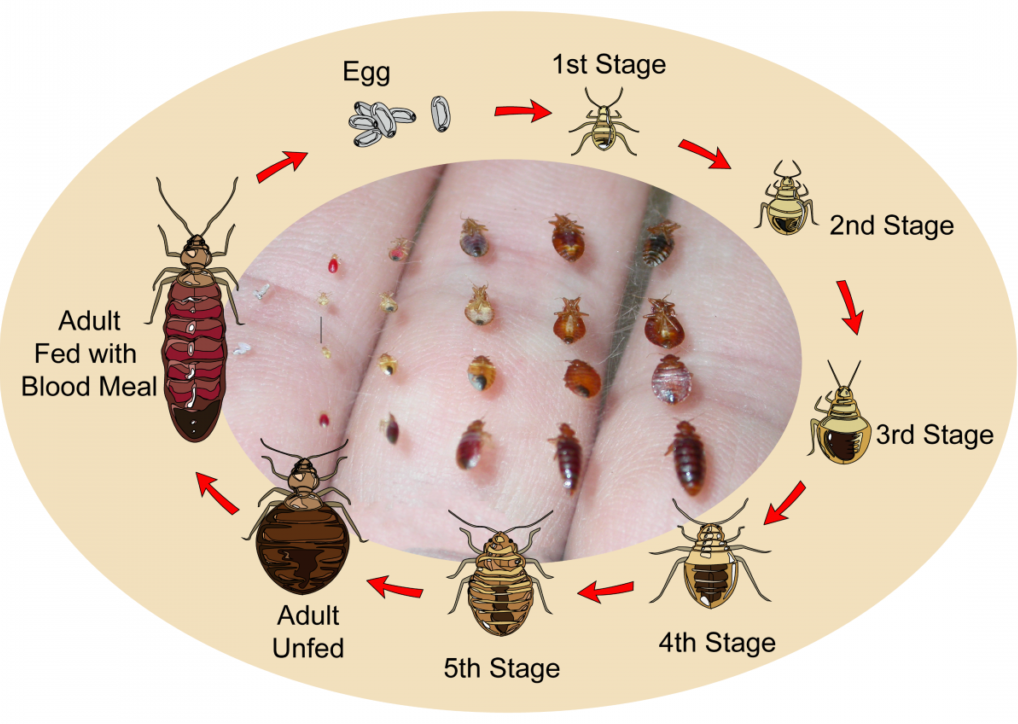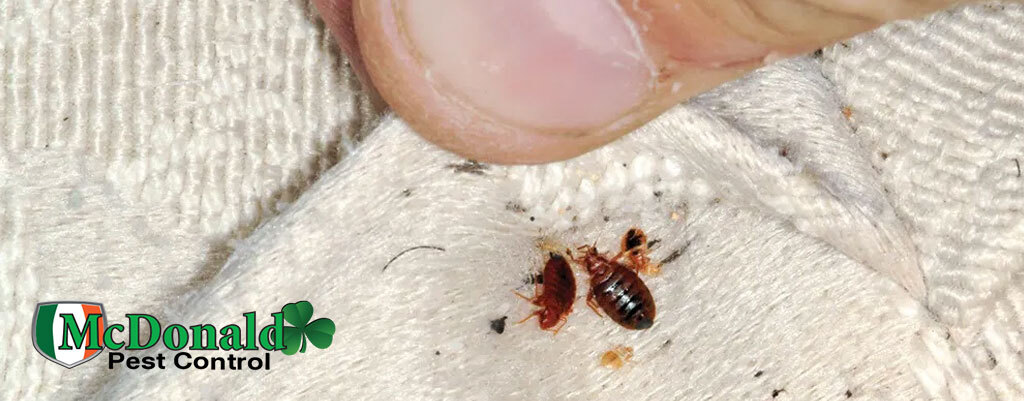Effective Bed Bug Heat Treatment for Homes and Businesses in Arlington
Wiki Article
Obtain Enlightened About the Types of Bug Control Techniques and Their Benefits for Homeowners
Recognizing the different bug control approaches available to property owners is essential for reliable bug monitoring. House owners who are knowledgeable can make tactical options that not only address insect problems yet likewise boost the overall quality of their living environment.Chemical Bug Control Techniques
Chemical insect control techniques are an important element of incorporated parasite administration techniques for house owners seeking effective options to pest problems. These techniques include the application of chemical compounds developed to get rid of or discourage pests that threaten personal effects, wellness, and convenience. Usual chemicals made use of consist of insecticides, herbicides, fungicides, and rodenticides, each customized to target particular bugs.The primary advantage of chemical pest control is its rapid effectiveness; several formulas give prompt outcomes, reducing pest populaces significantly in a brief time. In addition, advancements in chemical formulations have resulted in items that are much more eco-friendly and have reduced toxicity degrees for non-target organisms when applied properly.

Organic Bug Control Strategies
All-natural pest control methods have gotten prominence as homeowners look for much safer and more lasting options to traditional chemical strategies. Organic bug control techniques use all-natural killers, parasites, or pathogens to take care of insect populaces efficiently. This approach is not only eco-friendly however likewise lessens the risk of harm to non-target varieties, including valuable pests and wild animals.One of one of the most usual organic control techniques entails introducing natural predators right into the atmosphere. For instance, ladybugs can be made use of to manage aphid populations, while nematodes target soil-dwelling parasites like grubs. Additionally, parasitoids-- microorganisms that survive or within a host-- can be used to control specific bug species by laying eggs inside them, eventually leading to their death.
Another technique is using biopesticides, which are derived from natural products such as microorganisms, minerals, or plants (bed bug exterminator). These products can efficiently target parasites while presenting minimal risk to people and animals. On the whole, organic insect control methods offer home owners with an efficient ways of bug administration that lines up with eco-friendly concepts, promoting a much healthier living atmosphere while decreasing reliance on synthetic chemicals
Mechanical Insect Control Techniques
Mechanical bug control strategies incorporate a range of techniques that literally protect against or remove pests without using chemicals. These techniques are particularly valuable for property owners looking for ecologically friendly choices while guaranteeing the safety of their living rooms.One usual approach is using barriers, such as catches, displays, and internet, which avoid parasites from getting in homes or particular locations. As an example, installing window screens can effectively maintain pests out, while utilizing physical obstacles around yards can prevent bigger pests like rabbits or deer. Additionally, mechanical traps designed for rodents can catch and get rid of these bugs without the need for poisonous compounds.
An additional efficient method entails using vacuums and brooms to get rid of bugs directly from surface areas. Routine cleansing and upkeep can significantly lower bug populaces by removing food sources and hiding areas. Using tools like ultrasonic insect repellents can deter various bugs via sound waves that are undesirable to them however faint to human beings.
Social Pest Control Practices
Social bug control practices concentrate on modifying the setting and management strategies to create problems that are less for pest infestations. These practices are fundamental in keeping a balanced ecological community and lowering the dependence on chemical interventions. By modifying agricultural techniques, house owners can properly prevent pests while advertising plant wellness.One typical method consists of crop rotation, which interferes with the life cycles of bugs by changing the types of plants grown in a details location (bed bug exterminator). This not just reduces pest populaces but also boosts soil wellness. In addition, intercropping-- growing diverse plants in proximity-- can confuse pests and decrease their capability to situate their recommended host plants
Water monitoring is another vital element of cultural techniques. Appropriate irrigation techniques can prevent standing water, which functions as a breeding ground for insects and other insects. In addition, keeping sanitation around the home, such as routinely getting rid of debris and food waste, can significantly decrease pest tourist attraction.
Including these cultural techniques into a detailed bug administration strategy permits house owners to produce an environment that naturally prevents insects, consequently improving the performance of other control techniques while advertising lasting gardening and landscaping.

Integrated Insect Management Approaches
Integrated Pest Monitoring (IPM) represents an all natural method that integrates different strategies to properly manage bug populations while minimizing ecological impact. This technique incorporates biological, social, physical, and chemical techniques to accomplish lasting insect control. By evaluating pest populations and their natural enemies, IPM emphasizes tracking and identifying insects prior to applying control measures.One of the core concepts of IPM is using limits, which establish the degree of parasite activity that necessitates treatment. This ensures that therapies are used just when necessary, decreasing the reliance on chemical pesticides. Biological control methods, such as introducing natural killers or parasites, operate in conjunction with cultural techniques like crop rotation and environment adjustment to interrupt pest life process.
Additionally, IPM urges making use of least-toxic chemical options when treatment is needed, focusing on items that pose minimal threat to non-target organisms and the setting. For house owners, adopting IPM comes close to not only enhances the efficacy of insect administration but likewise advertises a much healthier living atmosphere, cultivating biodiversity and reducing chemical exposure. Eventually, IPM encourages homeowners to make informed choices that stabilize pest control with environmental duty.
Final Thought
In final thought, understanding the numerous bug control methods empowers homeowners to make informed decisions pertaining to pest monitoring. Each technique-- chemical, organic, mechanical, social, and integrated parasite administration-- uses distinct benefits that cater to different needs and choices.Recognizing the different parasite control techniques available to house owners is necessary for efficient bug management.Chemical parasite control techniques are a critical element of incorporated parasite management strategies for property owners seeking effective options to pest infestations. Generally, organic bug control techniques provide home owners with an efficient means of bug management that straightens with eco-friendly concepts, advertising a exterminator healthier living environment while decreasing reliance on synthetic chemicals.
Cultural bug control practices concentrate on modifying the setting and management strategies to create problems that are less helpful to pest problems.In verdict, understanding the numerous pest control approaches empowers house owners to make educated decisions pertaining to pest management.
Report this wiki page